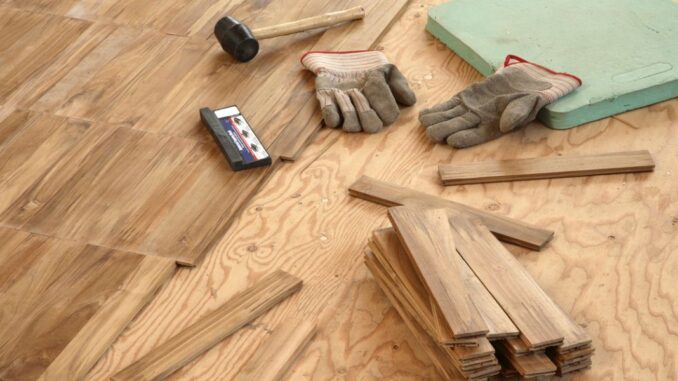
Why Choosing the Right Plywood Matters
Building or renovating a home involves many critical decisions, but none may be as foundational as the selection of the right subflooring material. The subfloor is essentially the backbone of your floor system, and it plays an integral role in ensuring your finished floors are stable, durable, and long-lasting. Subfloors are designed to provide a level surface for the final floor covering to rest on, ensuring that everything from hardwood floors to carpets or tiles remains intact for years.
When you choose what type of plywood for subfloor to use, you’re not just picking a material – you’re deciding on the strength, moisture resistance, and overall resilience of your floor. The right plywood choice can make the difference between a floor that lasts for decades and one that succumbs to moisture damage, sagging, or warping in just a few years. It’s essential to understand how the right plywood can affect your entire flooring system’s performance, and how it will hold up to everyday wear and tear.
This article will explore every facet of choosing the best plywood for subflooring, including what factors to consider, the different types of plywood available, and how to install your subfloor properly. You will gain insight into what type of plywood for subfloor fits your specific needs, whether you’re dealing with moisture-prone areas, heavy loads, or high-traffic environments.
What is a Subfloor?
A subfloor is the structural layer that serves as the base for all other floor coverings in your home. It is the first layer that comes into direct contact with the building’s framing and foundation, providing the necessary support for your floor. Without a stable and properly installed subfloor, the integrity of the rest of your flooring system can be compromised, leading to uneven surfaces, creaky floors, and premature wear on the final floor covering.
The subfloor also plays a role in distributing weight across the floor. Everything from the weight of furniture to daily foot traffic is spread evenly over the subfloor to prevent sagging, cracking, or any other structural issues. Subfloors ensure that your finished flooring stays level and intact, regardless of the external pressures placed upon it.
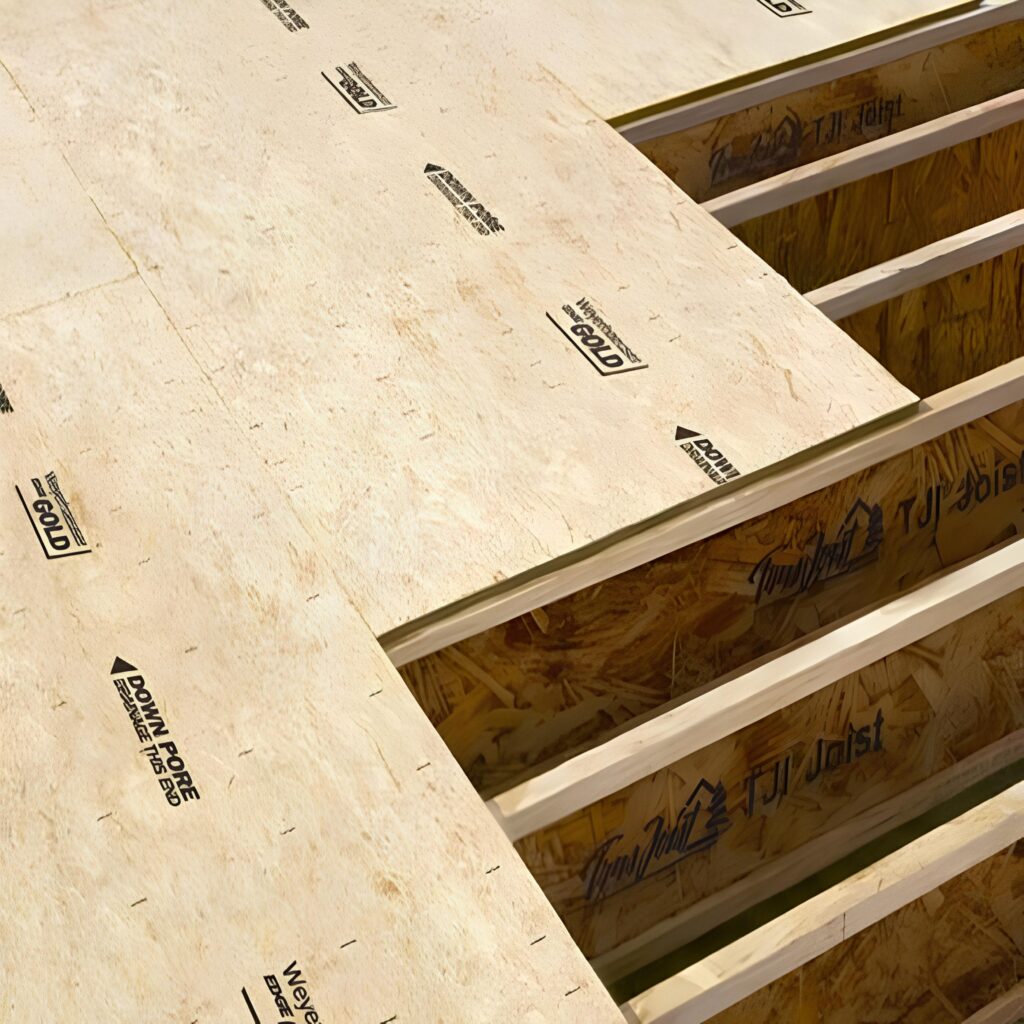
Common Materials Used for Subfloors
When it comes to subfloor materials, there are several options to choose from, each with its own pros and cons. The most common subfloor materials include plywood, oriented strand board (OSB), cement board, and concrete. However, plywood is by far the most popular option, mainly because of its versatility, strength, and ease of installation.
Plywood is made from layers of thin wood veneers that are bonded together with strong adhesives, creating a sturdy and flexible material. It is widely chosen for subflooring because it offers the perfect balance of strength and stability, and it is resistant to cracking or warping when properly installed. This makes plywood an ideal candidate for what type of plywood for subfloor should be used in most residential applications.
Other options like OSB and cement board may be suitable for specific applications but do not offer the same combination of strength, affordability, and moisture resistance that plywood does. For example, OSB is less expensive but often lacks the same moisture resistance, while cement board is heavy and difficult to work with.
Key Factors to Consider When Choosing Plywood for Subfloors
When deciding what type of plywood for subfloor is ideal for your project, there are a number of important factors to weigh. From the material’s durability to its moisture resistance, every detail plays a role in ensuring your subfloor lasts. Here are the most important considerations when selecting plywood for your subfloor:
Strength and Durability: Ensuring Load-Bearing Capacity
The primary function of a subfloor is to support the weight of everything on top of it, including furniture, appliances, and, most importantly, the finished floor itself. Therefore, the strength and durability of the plywood are paramount. A strong subfloor ensures that the floor remains stable, level, and free of defects for years to come.
Plywood strength is largely determined by its grade and the type of wood used in its construction. For subflooring, you’ll want to select a plywood that is both durable and capable of supporting the weight of your home’s furnishings without warping or sagging. CDX plywood, for example, is a common choice because it strikes a balance between affordability and strength. However, if your subfloor needs to support heavier loads or more intense wear and tear, you may want to opt for thicker or higher-grade plywood.
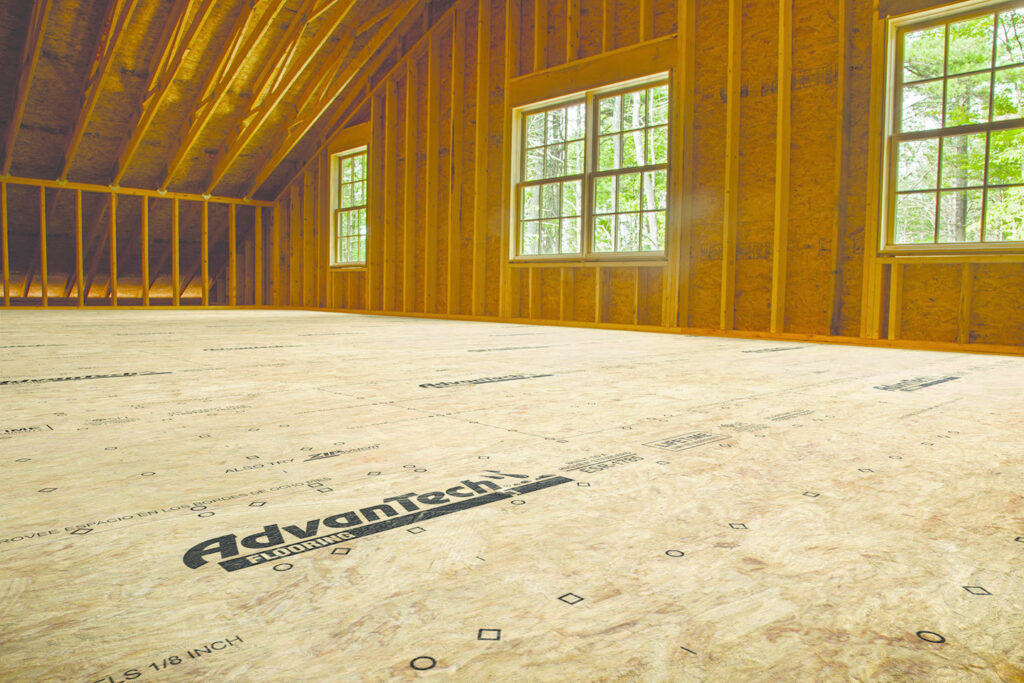
Moisture Resistance: Protecting Against Humidity and Water Damage
Moisture exposure can severely damage your subfloor over time. Whether it’s from leaks, humidity, or natural water exposure, moisture is one of the biggest threats to plywood. If you live in an area with high humidity or are installing subflooring in moisture-prone areas like basements or bathrooms, choosing the right type of plywood for subfloor that resists moisture is essential.
Plywood comes in different grades with varying levels of moisture resistance. Exterior-grade plywood or pressure-treated plywood are better suited for areas where moisture is a concern. These plywood types are specifically designed to withstand water exposure, reducing the risk of swelling, warping, and degradation that could occur with standard plywood in a moist environment.
When considering what type of plywood for subfloor to choose, always take into account the moisture levels in the area and whether additional treatments are needed for extra protection.
Thickness: Balancing Stability and Performance
The thickness of the plywood you select will have a direct impact on the stability and overall performance of your subfloor. Thicker plywood provides additional strength and is better able to bear heavy loads. However, thicker plywood is not always necessary depending on the conditions of your floor and the type of final floor covering you plan to install.
The most common thicknesses for subfloor plywood are 1/2″, 5/8″, and 3/4″. The thicker the plywood, the more strength and stability it offers. However, it’s important to remember that local building codes may dictate a minimum plywood thickness for subflooring, especially if the subfloor will support heavy materials like tiles or stone floors. The right type of plywood for subfloor will depend on your specific building requirements and what kind of flooring you intend to use on top of the plywood.
If you are unsure about which thickness is best, consult local building codes or an expert to ensure you meet the required standards.
Grade: Understanding Plywood Grades
Plywood comes in different grades, and understanding these grades will help you select the best plywood for subflooring. Plywood grades are categorized into different levels, ranging from A to D, with A being the highest quality and D being the lowest. For subflooring, CDX plywood is a common and recommended choice because it offers a good balance of strength and moisture resistance while still being affordable.
Cost: Budget-Friendly Plywood Options
Cost is often a significant factor when choosing what type of plywood for subfloor to use. While higher-quality plywood options like marine-grade or pressure-treated plywood may offer superior protection and durability, they can also be more expensive. If you’re on a budget, CDX plywood is often the best value for most residential subflooring projects, providing enough durability for typical home use.
Keep in mind that investing in a higher-quality plywood may save you money in the long run by reducing the need for future repairs or replacements. When considering the right plywood for subfloor, always balance the initial cost with the expected longevity of the material.
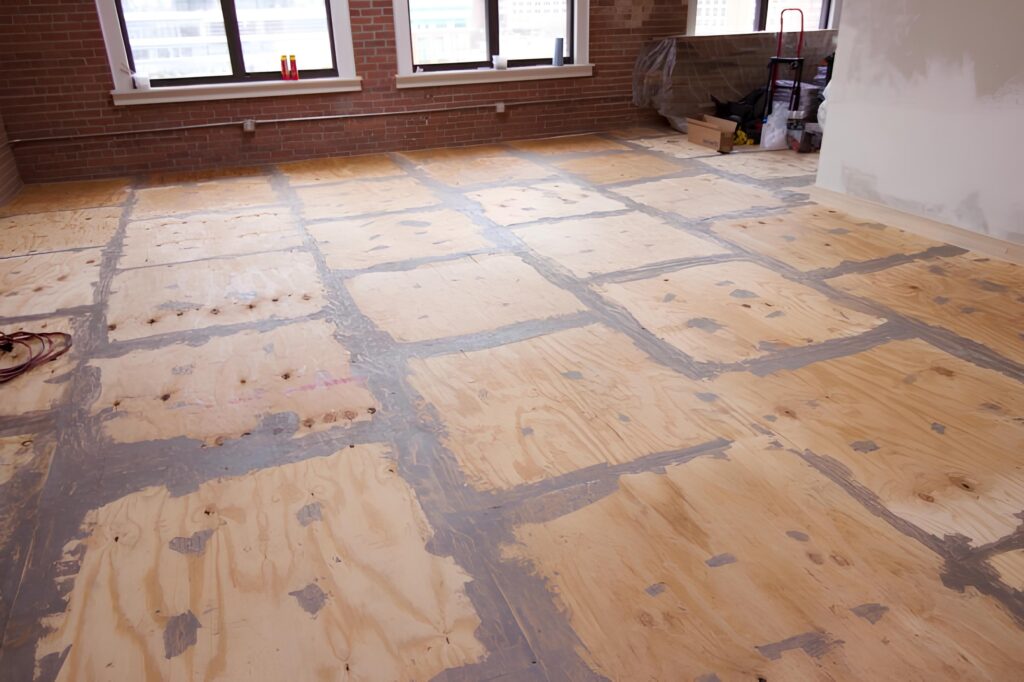
Types of Plywood for Subflooring: What Are Your Options?
Now that you’ve considered the key factors, it’s time to explore the various types of plywood that can be used for subflooring. Here are some of the most common and recommended options:
CDX Plywood: The Go-To Choice for Subfloors
CDX plywood is the most common type of plywood used for subflooring. It is affordable, readily available, and provides the necessary strength and durability for most residential applications. CDX plywood is made from softwood veneers that are bonded together with an exterior-grade adhesive, giving it good resistance to moisture. This makes it a top choice for homeowners who want a strong, stable subfloor that won’t break the bank.
Tongue and Groove Plywood: Enhanced Stability for Subfloors
Tongue and groove plywood is designed with interlocking edges, allowing the sheets of plywood to fit together seamlessly. This interlocking feature makes it more stable than regular plywood, reducing the likelihood of gaps or shifting over time. If you’re looking for what type of plywood for subfloor will provide additional stability and reduce the risk of creaky floors, tongue and groove plywood is an excellent choice.
Exterior Grade Plywood: The Ideal Option for Moisture-Prone Areas
If your subfloor will be exposed to high levels of moisture, exterior-grade plywood is the best option. This type of plywood is treated with a waterproof adhesive to prevent water damage and rot. Exterior-grade plywood is commonly used in basements, bathrooms, and kitchens where humidity and water exposure are more frequent. When choosing what type of plywood for subfloor in these environments, it is essential to select plywood that can withstand constant exposure to moisture without degrading.
Marine Grade Plywood: For the Most Moisture-Prone Environments
For areas with extreme moisture, marine-grade plywood is the ultimate option. This plywood is constructed with higher-quality veneers and waterproof adhesive, ensuring superior protection against water and moisture. Marine-grade plywood is ideal for subfloors in regions with high humidity or constant water exposure, such as docks or boats. Marine-grade plywood is more expensive than other options but offers unparalleled moisture resistance, making it the best choice in demanding environments.
Pressure-Treated Plywood: Protection Against Water and Insects
If your subfloor is in an area that is prone to moisture and insect damage, pressure-treated plywood is a great option. This plywood is treated with chemicals that help it resist both water damage and pest infestations. It’s perfect for use in crawl spaces, basements, or areas with high moisture levels. When selecting what type of plywood for subfloor to use in these environments, pressure-treated plywood offers the best protection.
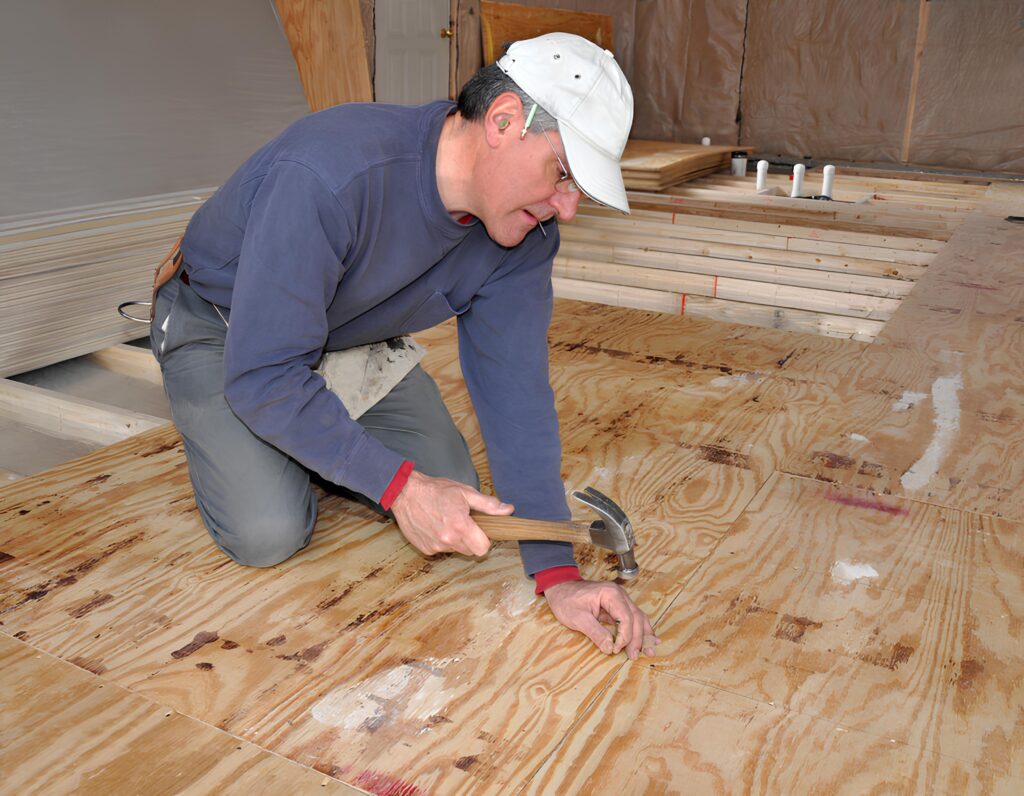
How to Choose the Right Thickness of Plywood
When it comes to plywood thickness, there are several standard options available. The most common are:
- 1/2″ plywood: Suitable for lighter applications, often used in smaller spaces or as an additional layer.
- 5/8″ plywood: A great balance between strength and cost, commonly used in residential subflooring projects.
- 3/4″ plywood: Ideal for areas requiring maximum strength and load-bearing capacity.
Moisture Resistance and Protection: Safeguarding Your Subfloor
When selecting plywood for a subfloor, moisture resistance should be a top priority, especially in areas with high humidity or potential water exposure. There are a few ways to increase moisture protection:
- Sealing plywood with a moisture-resistant coating.
- Using pressure-treated or exterior-grade plywood for areas prone to moisture.
Ensuring your plywood is resistant to moisture will protect it from warping, swelling, or rotting over time.
Installation Tips for Plywood Subfloors
Proper installation is key to ensuring the stability and longevity of your subfloor. Here are some essential installation tips:
- Prepare the surface: Ensure that the foundation is clean and level before installing plywood.
- Spacing: Leave gaps between plywood sheets for expansion and contraction.
- Fastening patterns: Use appropriate fasteners and ensure a consistent pattern to hold the plywood securely in place.
By following these tips, you can ensure that your plywood subfloor will provide years of support and stability.
Common Mistakes to Avoid
Several common mistakes can undermine the quality of your plywood subfloor. These include:
- Using incorrect thickness or grade for the specific needs of the project.
- Neglecting moisture resistance in high-humidity areas.
- Improper installation, which can lead to squeaky floors and long-term damage.
Avoiding these mistakes will ensure a durable and long-lasting subfloor.
Alternatives to Plywood for Subfloors
While plywood is the most common choice, alternatives like OSB or cement board are sometimes used for subflooring. These materials have their pros and cons, but plywood remains the top option for its balance of cost, strength, and moisture resistance.
Conclusion
Choosing what type of plywood for subfloor is a crucial decision that impacts the stability and longevity of your entire floor system. Whether you’re dealing with moisture-prone areas, heavy loads, or specific building requirements, it’s essential to select plywood that meets your specific needs.